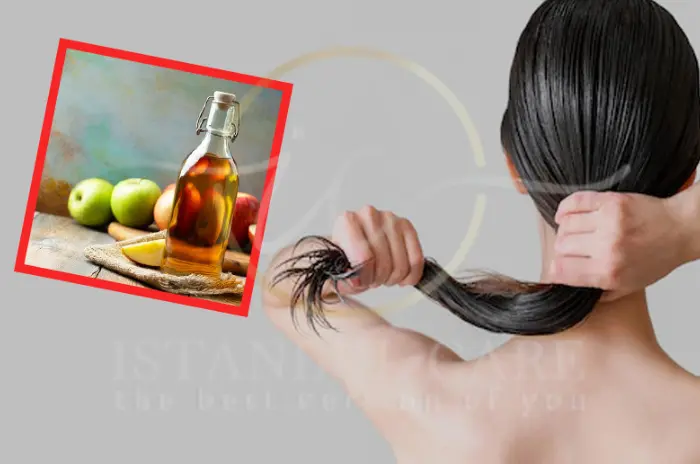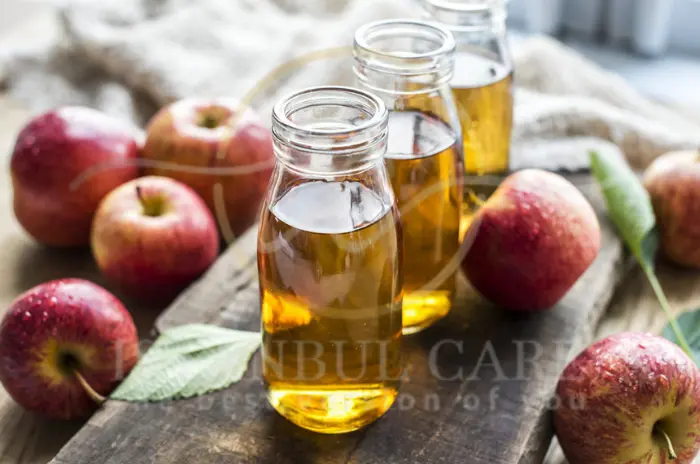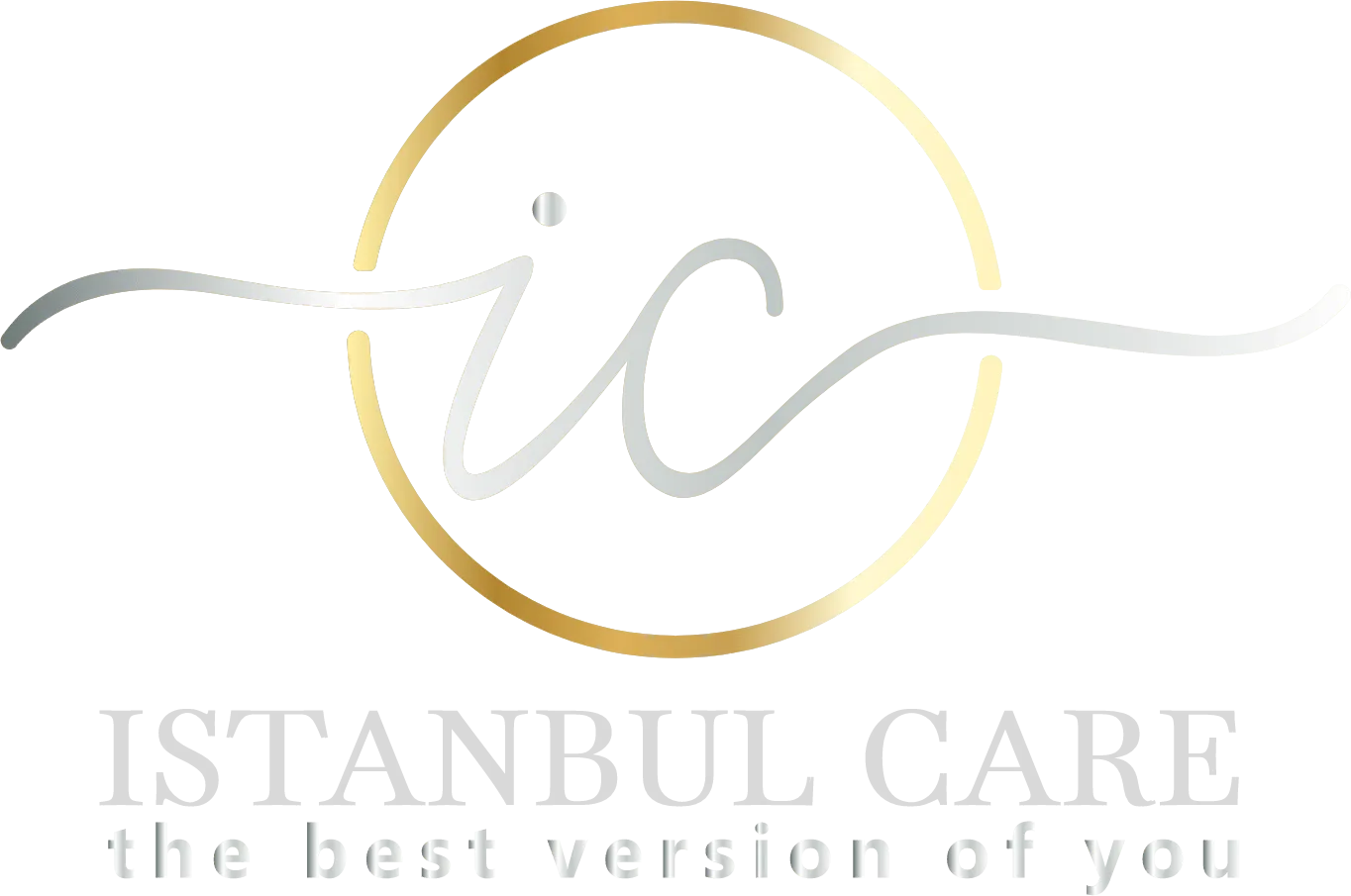Natural hair care solutions have gained tremendous popularity as people seek gentle, chemical-free alternatives for maintaining healthy hair and scalp. Among these natural remedies, apple cider vinegar hair rinse have emerged as a favorite for their simplicity, affordability, and potential benefits. As an intermediary organization connecting patients with qualified hair and scalp specialists, İstanbul Care Clinic recognizes the importance of providing accurate information about popular hair care treatments, including natural remedies like apple cider vinegar (ACV) rinses.

What Is Apple Cider Vinegar and Why Is It Used for Hair?
Apple Cider Vinegar (ACV) is a fermented product made from crushed apples that has been used for centuries in cooking, medicine, and beauty applications. Its unique properties make it particularly appealing for hair care enthusiasts seeking natural solutions.
Understanding Apple Cider Vinegar and Its Acidity
Apple cider vinegar is created through a two-step fermentation process that gives it distinctive characteristics:
Production Process:
- First fermentation: Apples are crushed and combined with yeast to convert sugars into alcohol
- Second fermentation: Bacteria convert the alcohol into acetic acid, creating vinegar
- Acetic acid content: Typically contains 4-6% acetic acid, giving it its characteristic sour taste and smell
Key Properties:
- pH level: Ranges from 2.5 to 3.0, making it acidic
- Active compounds: Contains acetic acid, malic acid, and trace minerals
- Antimicrobial properties: Natural ability to inhibit bacterial and fungal growth
- Astringent qualities: Can help remove buildup and residue
Why People Use ACV as a Hair Rinse
The popularity of ACV hair rinses stems from several appealing factors:
Natural pH balancing: Hair and scalp naturally have an acidic pH (4.5-5.5), which can be disrupted by alkaline shampoos and styling products. ACV’s acidity helps restore this natural balance.
Historical use: Traditional beauty practices have long incorporated vinegar rinses for hair care, lending credibility to modern applications.
Accessibility: ACV is readily available, affordable, and doesn’t require special equipment or professional application.
Multi-purpose benefits: Users report improvements in shine, manageability, dandruff reduction, and scalp health.
Benefits of Apple Cider Vinegar Hair Rinse
Understanding the specific benefits of ACV rinses helps users make informed decisions about incorporating them into their hair care routines.
Restoring pH Balance of the Scalp
The scalp’s natural pH balance is crucial for optimal hair and scalp health:
Why pH matters: A balanced pH helps maintain the scalp’s protective acid mantle, which defends against harmful bacteria and fungi while keeping the hair cuticle smooth and sealed.
Common pH disruptors:
- Alkaline shampoos (pH 7-10)
- Hard water minerals
- Chemical treatments and styling products
- Environmental pollutants
How ACV helps: The acidic nature of apple cider vinegar helps neutralize alkalinity and restore the scalp to its optimal pH range, creating an environment where hair can thrive.
Reducing Dandruff and Itchy Scalp
ACV’s antimicrobial properties may help address common scalp issues:
Antifungal effects: Research suggests that acetic acid can inhibit the growth of Malassezia, a yeast-like fungus commonly associated with dandruff and seborrheic dermatitis.
Exfoliation benefits: The mild acidity helps gently remove dead skin cells and product buildup that can contribute to flaking and irritation.
Soothing properties: Many users report reduced scalp itching and irritation after regular ACV rinse use, though individual results may vary.
Improving Shine and Smoothness
The cosmetic benefits of ACV rinses are among the most immediately noticeable:
Cuticle smoothing: The acidic pH helps flatten hair cuticles, which lie more smoothly against the hair shaft, resulting in increased light reflection and enhanced shine.
Residue removal: ACV can help dissolve mineral deposits from hard water and product buildup that can make hair appear dull and feel rough.
Enhanced manageability: Smoother cuticles mean less friction between hair strands, reducing tangling and making hair easier to style.
Detangling and Hair Softening Effects
Users frequently report improved hair texture and easier detangling after ACV treatments:
- Reduced friction: Smoothed cuticles create less resistance when combing or brushing
- Improved elasticity: Better-hydrated hair is more flexible and less prone to breakage
- Enhanced slip: The smoothing effect makes hair feel silkier and more manageable
How to Use Apple Cider Vinegar on Your Hair
Proper preparation and application are essential for achieving benefits while avoiding potential adverse effects.
Proper Dilution and Safety Tips
Critical dilution ratios: Never use undiluted ACV on hair or scalp, as it can cause severe irritation and damage.
| Hair Type | ACV:Water Ratio | Frequency |
|---|---|---|
| Normal Hair | 1:4 (1 part ACV, 4 parts water) | 1-2 times per week |
| Oily Hair | 1:3 (slightly stronger solution) | 2-3 times per week |
| Dry/Damaged Hair | 1:6 (more diluted) | Once per week |
| Sensitive Scalp | 1:8 (very diluted) | Every 2 weeks |
Essential safety guidelines:
- Always perform a patch test before first use
- Start with more diluted solutions and adjust as needed
- Avoid contact with eyes and open wounds
- Rinse thoroughly after application
Step-by-Step Guide to Making an ACV Hair Rinse
Basic ACV rinse preparation:
- Measure ingredients: Use the appropriate ratio for your hair type
- Mix thoroughly: Combine ACV and water in a spray bottle or bowl
- Optional additions: Add a few drops of essential oils for fragrance (lavender or rosemary work well)
- Test temperature: Ensure the mixture is at a comfortable temperature
Application process:
- Shampoo first: Cleanse hair with your regular shampoo
- Apply ACV rinse: Pour or spray the mixture evenly over hair and scalp
- Massage gently: Work the rinse through hair with fingertips
- Wait briefly: Allow 1-3 minutes for the rinse to work
- Rinse thoroughly: Remove all traces with cool water
- Condition if needed: Follow with a light conditioner if hair feels dry
How Often Should You Rinse With Apple Cider Vinegar?
Frequency depends on individual hair needs and tolerance:
General guidelines:
- Start with once per week to assess tolerance
- Gradually increase to 2-3 times weekly if beneficial
- Reduce frequency if irritation or dryness occurs
- Some people benefit from daily use of very diluted solutions
Signs you may be overusing ACV:
- Increased hair dryness or brittleness
- Scalp irritation or redness
- Color fading in treated hair
- Unusual hair texture changes
Potential Risks and Side Effects
While generally safe when used properly, ACV hair rinses can cause adverse effects in some individuals.
Skin Irritation and Overuse Concerns
Common side effects:
- Scalp irritation, burning, or stinging sensation
- Dry, brittle hair from overuse
- Color fading in chemically treated hair
- Allergic contact dermatitis in sensitive individuals
Risk factors for irritation:
- Using undiluted or overly concentrated solutions
- Applying to broken or irritated skin
- Leaving the rinse on for extended periods
- Having naturally sensitive skin or scalp conditions
Who Should Avoid Apple Cider Vinegar Hair Treatments?
Certain individuals should exercise caution or avoid ACV rinses entirely:
Contraindications:
- Open wounds, cuts, or severe scalp irritation
- Known allergies to apples or vinegar
- Very sensitive skin or scalp conditions like eczema
- Recently chemical-treated hair (within 2 weeks)
Special considerations:
- Pregnant or nursing women should consult healthcare providers
- Individuals with color-treated hair should test on a small section first
- Those with very dry or damaged hair should use minimal concentrations
Who Can Benefit from an ACV Hair Rinse?
Understanding which hair types and conditions respond best to ACV treatments helps optimize results.
Ideal Hair Types and Scalp Conditions
Hair types that typically benefit:
- Oily or greasy hair that tends to accumulate buildup
- Hair exposed to hard water or heavy styling products
- Normal to thick hair that can tolerate acidic treatments
- Hair lacking shine or appearing dull
Scalp conditions that may improve:
- Mild dandruff or flaking
- Product buildup and residue
- Slightly alkaline scalp pH from frequent shampooing
- Minor scalp irritation from environmental factors
Things to Consider Before Using ACV on Hair
Pre-treatment evaluation:
- Assess current hair and scalp condition
- Consider recent chemical treatments or processing
- Evaluate sensitivity to acidic products
- Review current hair care routine and products
Professional consultation: As an intermediary organization, İstanbul Care Clinic recommends consulting with a qualified hair specialist if you have persistent scalp issues or concerns about incorporating ACV into your routine.

Apple Cider Vinegar Hair Rinse Tips and Warnings
Maximizing benefits while minimizing risks requires attention to proper technique and timing.
Dilution Is Key to Avoid Irritation
Why dilution matters: Undiluted ACV has a pH around 2.5, which is too acidic for direct scalp contact and can cause chemical burns, severe irritation, and hair damage.
Proper mixing techniques:
- Use measuring tools for accurate ratios
- Mix thoroughly to ensure even distribution
- Test pH if possible (aim for 3.5-4.5)
- Prepare fresh mixtures for each use
When to Avoid ACV Treatments
Temporary contraindications:
- Immediately after chemical treatments (perms, relaxers, color)
- During active scalp infections or conditions
- When experiencing unusual hair loss or breakage
- After recent sunburn or scalp injury
Permanent avoidance situations:
- Confirmed allergic reactions to vinegar or apples
- Severe scalp sensitivity or chronic conditions
- Hair that becomes damaged or brittle with acidic treatments
Alternatives if ACV Isn’t Right for You
Gentler acidic rinses:
- Lemon juice diluted with water (use sparingly)
- White vinegar (often milder than ACV)
- Commercial pH-balancing products
- Rice water rinses (naturally acidic)
Non-acidic clarifying options:
- Baking soda paste (very occasional use)
- Clarifying shampoos
- Chelating shampoos for hard water
- Professional scalp treatments
How to Make an Apple Cider Vinegar Hair Rinse
Creating effective ACV hair treatments at home is simple and cost-effective when done correctly.
Simple DIY ACV Rinse Recipe
Basic recipe for normal hair:
- 1/4 cup raw, unfiltered apple cider vinegar
- 1 cup cool water
- Optional: 2-3 drops essential oil
Enhanced recipe with herbs:
- 1/4 cup ACV
- 1 cup water
- 1 tablespoon dried rosemary (steep for 20 minutes, then strain)
- 1 teaspoon honey (for extra moisture)
Step-by-Step Guide for Best Results
Preparation phase:
- Choose high-quality, organic ACV with “the mother” for maximum benefits
- Use filtered or distilled water to avoid mineral interference
- Mix ingredients in a clean spray bottle or bowl
- Allow mixture to reach room temperature
Application technique:
- Wet hair thoroughly after shampooing
- Apply rinse section by section for even coverage
- Massage gently into scalp and through hair lengths
- Allow 2-3 minutes for processing
- Rinse completely with cool water
- Follow with light conditioner if needed
How Often Should You Use an ACV Rinse?
Beginner schedule:
- Week 1-2: Once weekly to assess tolerance
- Week 3-4: Twice weekly if no adverse effects
- Ongoing: Adjust based on hair response and needs
Maintenance routine:
- Oily hair: 2-3 times per week
- Normal hair: 1-2 times per week
- Dry hair: Once per week or biweekly
- Chemically treated hair: Once every 2 weeks
Apple Cider Vinegar Hair Treatments
Beyond basic rinses, ACV can be incorporated into various hair treatments for enhanced benefits.
Simple ACV Rinse Recipe for All Hair Types
Universal gentle formula:
- 2 tablespoons ACV
- 1 cup water
- 1 teaspoon aloe vera gel (for soothing properties)
- 3 drops lavender essential oil (for fragrance and calm)
Application method:
- Mix all ingredients in a spray bottle
- Shake well before each use
- Apply after shampooing, focusing on scalp and mid-lengths
- Leave for 2 minutes, then rinse thoroughly
ACV Hair Mask for Extra Nourishment
Deep conditioning ACV mask:
- 3 tablespoons ACV
- 2 tablespoons coconut oil (melted)
- 1 tablespoon honey
- 1/2 cup water
Treatment process:
- Combine all ingredients and mix until smooth
- Apply to damp hair from roots to ends
- Cover with shower cap and leave for 15-20 minutes
- Shampoo thoroughly to remove all residue
- Use weekly for damaged or dry hair
ACV Spray for Daily Scalp Refresh
Light daily formula:
- 1 tablespoon ACV
- 1 cup water
- 2 drops tea tree oil (for antimicrobial benefits)
Usage guidelines:
- Store in refrigerator for freshness
- Spray lightly on scalp and hair roots
- Use on dry or slightly damp hair
- No need to rinse out
- Apply every other day or as needed
Important Precautions When Using ACV
Safety considerations are paramount when using acidic treatments on hair and scalp.
Potential Side Effects to Watch For
Immediate reactions:
- Burning or stinging sensations
- Redness or visible irritation
- Unusual hair texture changes
- Increased hair shedding
Long-term concerns:
- Progressive hair dryness or brittleness
- Color fading or alteration
- Scalp sensitivity development
- Hair breakage or weakness
How to Properly Dilute Apple Cider Vinegar
Safe dilution chart:
| Concentration | ACV Amount | Water Amount | Best For |
|---|---|---|---|
| Very Mild | 1 tablespoon | 1 cup | Sensitive scalp, first-time use |
| Mild | 2 tablespoons | 1 cup | Normal hair maintenance |
| Moderate | 1/4 cup | 1 cup | Oily hair, buildup removal |
| Strong | 1/3 cup | 1 cup | Occasional deep cleansing only |
Mixing best practices:
- Always add ACV to water, not water to ACV
- Stir or shake thoroughly for even distribution
- Test a small amount on skin before full application
- Never exceed 1:2 ratio (ACV to water)
Who Should Avoid ACV Hair Treatments
Absolute contraindications:
- Individuals with open scalp wounds or severe irritation
- Those with confirmed apple or vinegar allergies
- People with very damaged or over-processed hair
- Anyone experiencing active scalp infections
Relative contraindications (use with caution):
- Sensitive skin or scalp conditions
- Recent chemical hair treatments
- Color-treated hair (test first)
- Pregnancy or nursing (consult healthcare provider)
ACV Rinse in a Full Hair‑Care Routine
Integrating ACV rinses effectively into your complete hair care regimen maximizes benefits and minimizes conflicts with other products.
Using ACV After Shampoo or Baking Soda Cleanse
Standard sequence:
- Pre-treatment: Apply any leave-in treatments or oils to ends
- Cleanse: Shampoo hair thoroughly with regular product
- ACV rinse: Apply diluted mixture as described above
- Final rinse: Remove all ACV residue with cool water
- Condition: Apply conditioner to mid-lengths and ends only
- Styling: Proceed with usual styling routine
After baking soda cleanse (occasional deep cleaning):
- Baking soda raises hair pH significantly
- ACV rinse is particularly beneficial to restore acid balance
- Use slightly stronger ACV concentration (1:3 ratio)
- Always follow with moisturizing conditioner
Follow‑Up Conditioner Advice
When to condition after ACV:
- Always condition dry, damaged, or chemically treated hair
- Apply conditioner if hair feels rough or tangled
- Focus conditioner on mid-lengths and ends, avoiding roots
- Use lighter conditioners to avoid weighing hair down
When conditioning may not be necessary:
- Very oily hair that feels clean and manageable
- Fine hair that becomes weighed down easily
- When using ACV masks that include moisturizing ingredients
As an intermediary organization, İstanbul Care Clinic recommends monitoring your hair’s response and adjusting your routine accordingly, consulting with a hair specialist if you experience persistent issues.
Speak with our expert Hair Transplantation specialists

Speak with our expert Hair Transplantation specialists
We’re ready to answer your questions
Frequently Asked Questions
An ACV hair rinse is a diluted mixture of apple cider vinegar and water applied to hair after shampooing. It works by restoring the scalp’s natural acidic pH (4.5-5.5), smoothing hair cuticles for enhanced shine, and providing antimicrobial benefits that may help reduce dandruff and scalp irritation.
Mix 2-4 tablespoons of raw, unfiltered ACV with 1 cup of water. For sensitive scalps, use less ACV (1 tablespoon per cup). Apply after shampooing, massage gently into scalp and hair, wait 2-3 minutes, then rinse thoroughly with cool water.
Key benefits include restored pH balance, increased shine and smoothness, reduced dandruff and scalp irritation, improved detangling, removal of product buildup, and enhanced hair manageability. Results vary by individual hair type and condition.
Start with once weekly to assess tolerance. Normal hair can typically handle 1-2 times per week, oily hair 2-3 times weekly, and dry or damaged hair once weekly or less. Reduce frequency if you experience dryness or irritation.
ACV may help reduce dandruff due to its antimicrobial properties that can inhibit fungal growth and its ability to gently exfoliate dead skin cells. However, severe or persistent dandruff should be evaluated by a hair specialist for proper diagnosis and treatment.
People with open scalp wounds, known allergies to apples or vinegar, very sensitive skin, or severely damaged hair should avoid ACV rinses. Those with recent chemical treatments should wait at least 2 weeks and test on a small section first.
Possible side effects include scalp irritation, burning sensations, hair dryness or brittleness from overuse, and color fading in chemically treated hair. Always dilute properly and discontinue use if adverse reactions occur.
Use ACV rinse after shampooing but before conditioning. The sequence should be: shampoo, ACV rinse, thorough water rinse, then conditioner on mid-lengths and ends. This order allows the ACV to work effectively while the conditioner provides necessary moisture.

